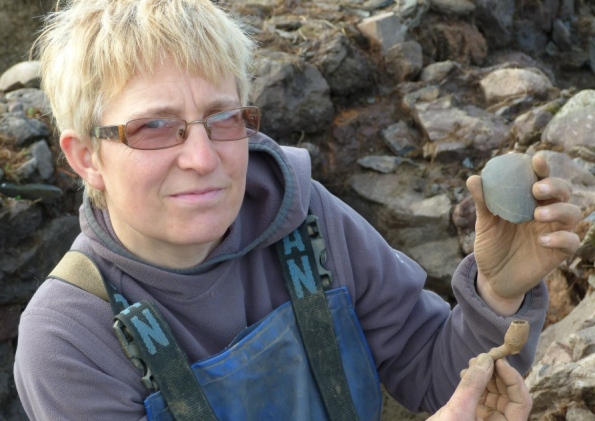
The find, on a hillside near Oban, includes a Neolithic axe-head dating back 5,000 to 6,000 years, three roundhouses around 2,500 to 3,000 years old and the remains of an 18th-century farmstead and metalwork store.
Other objects include a hoard of stone tools dating back 3,000 years, hundreds of fragments of Bronze Age and late 18th- century pottery, plus a clay pipe from around 1760-1820.
Dr Clare Ellis, of Argyll Archaeology, who was commissioned to survey the site at Glenshellach on the outskirts of Oban by local house-builders M & K MacLeod, said: "It's the largest excavation that has happened in recent years in mainland Argyll in this period of archaeology.
"It's quite exciting. The site is unusual because the excavation of domestic prehistoric sites in Argyll is very rare."
Kenny MacLeod, of M & K MacLeod, which is developing affordable homes at the site, said there would be an open day there today to give the public a chance to view the area around the archaeological dig.
Mr MacLeod added: "We are keen to look after the archaeology in the area. Things like this are important for the area and the community in general."
Dr Ellis explained that the roundhouses, a variety of artefacts and an old metalwork store - identified because of traces of molten iron - were hidden under the grass-covered hillside.
She said: "All you could see on site when we first did an evaluation was the main ruin of the farmstead - the roundhouses were under the grass and the soil.
"We have got three roundhouses that are prehistoric and two of them could be anything from Bronze Age to Iron Age."
She added: "We found the Neolithic axehead in the 18th- century farmstead, which we are currently excavating. It was among the rubble in the barn and is quite a rare find.
"It's a stone axehead and it's highly polished, for ceremonial use, not practical use. These were prestige items and they had a ritual significance.
"We think that whoever lived at the farmstead has found it in the fields and has thought, 'We will keep that.' It's quite a rare find.
"We also found lots of little hammer stones and wet stones for grinding corn, smashing up vegetative matter, or lichens and seaweed for dyes, and we have found a clay pipe which I think may be a Dutch pipe from 1760-1820 that may have been imported to Oban. The grinding stone tools are about 3,000 years old."
The archaeologists also found about 200 fragments of pottery, much of which was decorated. Dr Ellis said: "We have got Bronze Age pottery, recovered from middens, and 18th-century pottery, which dates the farmstead site.
"It is believed that one of the roundhouses may have belonged to a VIP, as it is 14 metres in diameter - huge when compared to the average size of prehistoric houses.
"It may be Iron Age, but it could be Bronze Age and if it's Bronze Age it will be a really, really exciting find because of its size. It's only when we have finished excavating the site and we get the carbon dating results back that we will know.
"We will send the charcoal from the hearth and it will give us a date and tell us whether it's Bronze or Iron Age."



Reader Comments
to our Newsletter